|
Each fall, the Minnesota Department of Human Services (DHS) mails a notice to all Minnesota Health Care Program (MHCP) members who receive their health care coverage through a health plan such as Hennepin Health. Members will see a mailing in the coming weeks.
To keep your health plan with Hennepin Health, you do not have to do anything. The period for annual health plan selection (AHPS) ends Wednesday, December 7.
You can get information about AHPS at https://mn.gov/dhs/health-plan-selection/. You will find resources on selecting or changing health plans, frequently asked questions, and contact information.
Now is a good time to update your records by doing these two things if they apply to you:
- Let your county worker know if your address has changed since last October.
- Let your county worker know if you are pregnant so you can receive additional health benefits.
- MinnesotaCare members should call MinnesotaCare at 651-297-3862 (800-657-3672, TTY 711.
If you have questions about our health plan coverage, call us at 612-596-1036, TTY 711 or 800-627-3529.
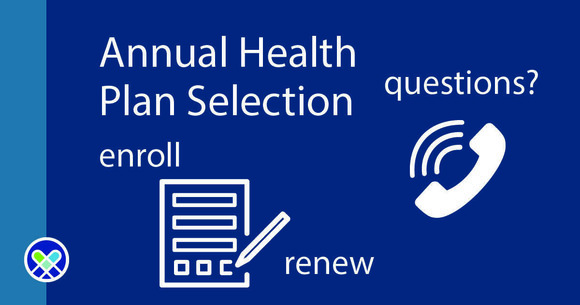
We want to know how we can best serve you and make your experience with us even better. We are gathering your feedback through a member survey. Members who complete the survey can receive a $5 gift card from Target or Walmart.
Members were recently sent an invitation via email to take the survey. If you did not receive an invitation, we probably don’t have a current email address for you. To update your record with your current email address, contact us at 612-596-1036 (TTY 711 or 800-627-3529) and we will send you a link to the survey.
|
Flu season is here. Now is the time to get a flu shot for you and your family. Flu shots are safe and covered by us with zero cost to you.
You can get a flu shot at many places, your clinic, local pharmacy and some retail locations. Check this list of pharmacies for a location near you.
Protect your health and the people around you.
|
|
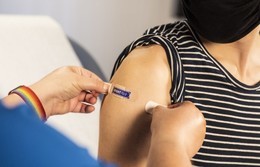 |
COVID-19 booster and Monkeypox
The COVID-19 virus is still with us. The good news is that vaccines are safe and highly effective at preventing a severe case, hospitalization and death.
People 12 and older are now recommended to get a new COVID-19 booster dose at least 2 months after their last COVID-19 primary series or booster. Even if you’ve already had COVID-19, you should get vaccinated.
The newest booster helps protect against the original COVID-19 strain and newer variants. It can help restore protection that has decreased since previous vaccination and provide broader protection against newer variants.
Where to get a booster
You can get a COVID-19 vaccine during the same visit with other vaccines such as the flu vaccine. You can get the COVID-19 vaccine at:
If you need transportation, interpreter services or have any questions about the COVID-19 vaccine, call Member Services at 612-596-1036 (TTY 1-800-627-3529).
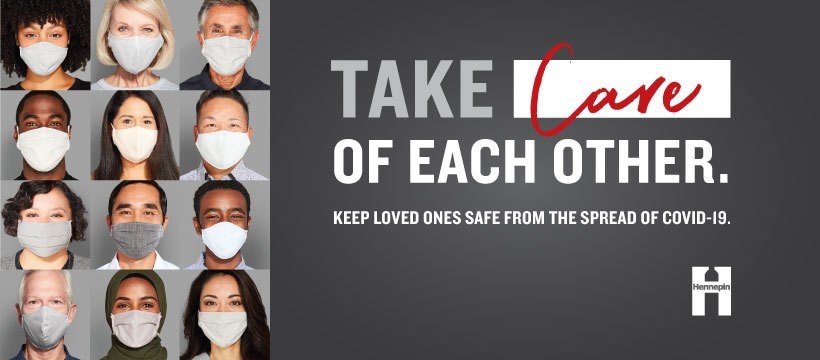
Monkeypox
If you develop a rash (bumps, sores, or blisters) and are worried that you might have monkeypox (MPX) or believe you have been exposed to it, contact your doctor or clinic.
Hennepin County’s Red Door Clinic is also offering vaccination for people at highest risk for MPX infection, including men who have sex with men, people who have been exposed to MPX, and other risk factors. Call the clinic at 612-543-5555.
For more information about MPX, including symptoms, harm reduction and managing symptoms, visit reddoorclinic.org/monkeypox.
If you have dentures, caring for your gums, tongue and mouth roof is important. Cleaning these areas, in addition to your dentures, helps keep you healthy. Follow these tips from the American Dental Association:
- Brush your gums, tongue and mouth roof with a soft-bristled brush every morning before putting in your dentures. This removes plaque and boosts circulation in the mouth.
- Pay special attention to clean teeth that fit under the denture's metal clasps. Plaque that gets trapped under the clasps raises the risk of tooth decay.
- If you wear a partial denture, remove it before brushing your natural teeth.
- Clean, rest and massage your gums regularly to help keep them healthy. Rinsing your mouth daily with lukewarm saltwater helps clean the gums.
If I have dentures, do I still need to see the dentist?
Yes. Regular dental visits are important so that you can be examined to ensure proper denture fit, to look for signs of oral diseases including cancer, and to have teeth professionally cleaned. Your dentist will advise you about how often to visit but every six months is standard. Members can earn a $25 gift card for an annual dental visit by a network dentist.
If you have any questions about your dentures, or if they stop fitting well or become damaged, contact your dentist.
Learn more
www.mouthhealthy.org/en/az-topics/d/Dentures
www.webmd.com/oral-health/dental-health-dentures
www.ada.org

The Enrollee Advisory Council (EAC), who are Hennepin Health members, met on August 18. Members discussed the following topics:
- Promoting mental health resources for the community
- Promoting the return to in-person primary care visits
- Promoting dental care visits and resources
- COVID-19 updates and Monkeypox awareness
- Member survey and newsletter awareness
- Introduction of Commissioner Chris LaTondresse
Council members talked about some common concerns. One concern is about safety from exposure to COVID-19 and crime as they visit their doctors or clinics. Some mentioned that because of the economy, other needs have been prioritized over health care. Many are experiencing a wait to get in to see a doctor or dentist. As usual, members had many health care questions for Dr. Scott, our chief medical officer.
The EAC gives feedback on overall health care issues, new programs and changes in procedures. Group feedback reflects the priorities and interests of members. If you have questions about the EAC, contact us at 612-596-1036 (TTY 711 or 800-627-3529).
|
The reopening of the Member Service Center was celebrated on September 28. More than 50 members and community partners joined us to tour the new space and participate in a ribbon cutting ceremony.
At the Member Service Center, you can stop in to:
|
|
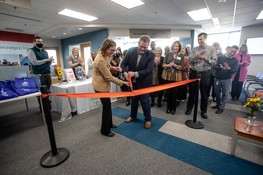 |
- Get help with questions about your benefits and reward vouchers.
- Pick up or reload a bus/rail pass.
- Use a private room to make a phone call or meet with your care team.
- Use the on-site computers to look up information like bus/rail maps and fares.
- Get help from us to find a doctor, dentist or clinic or make an appointment.
The Member Service Center is located at 525 Portland Avenue on the 8th floor in downtown Minneapolis. The new location is in the same building as county health services and the Red Door Clinic. The Member Service Center is open Monday – Friday, 8 a.m. – 4:30 p.m.

With the holiday season approaching, wellness for you and your family may be on your mind. The Hennepin Health Healthwise Knowledgebase online health tool has lots of information to help you learn about health conditions and how to treat them.
- Mental health – While the holidays bring joy and togetherness, they can also increase stress. Stress can affect your mental health. Use Healthwise Knowledgebase to find out more about:
- Anxiety
- Depression
- Panic attacks
- Healthy eating – It’s common to eat more than usual and extra sweets during the holidays. Use Healthwise Knowledgebase for tips on:
- Healthy eating
- Healthy eating for children
- Weight management
Learn more in English or Spanish at www.healthwise.net/hennepin.
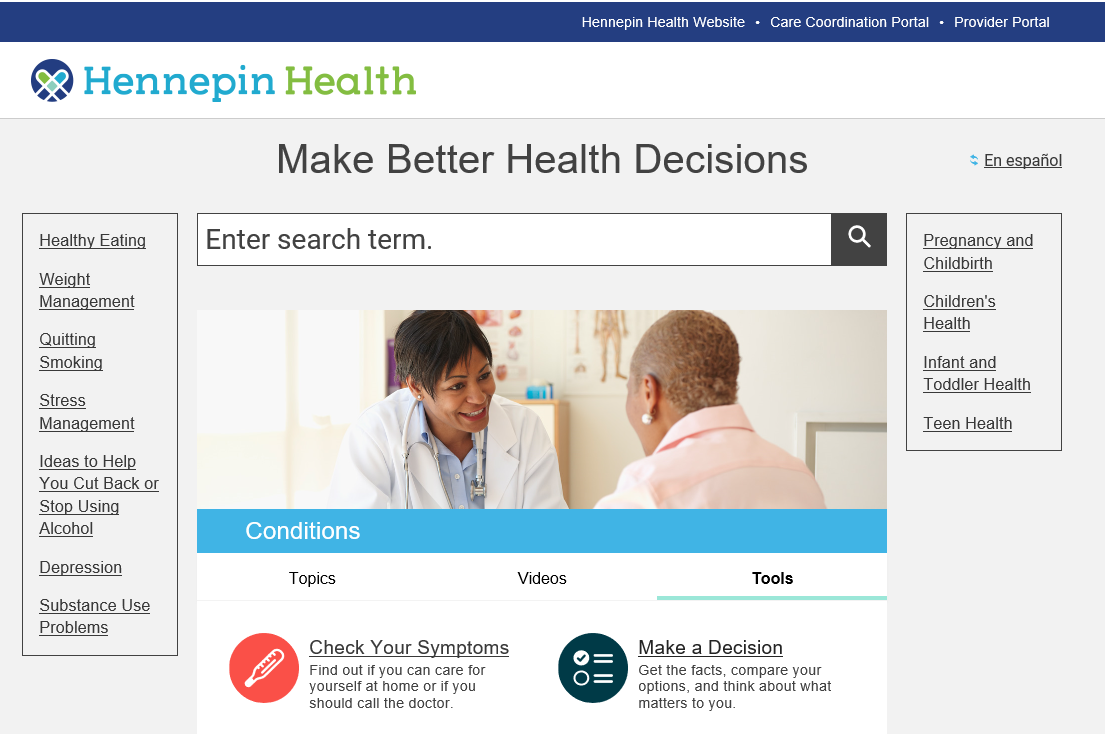
Breast cancer is the most common invasive cancer and the second leading cause of cancer death for women. For a woman in the U.S., there is a 1 in 8 chance she will develop breast cancer. In rare instances, breast cancer can also affect men.
However, screening and treatment improves survival rates. According to the American Cancer Society, there are currently more than 3.8 million breast cancer survivors in the U.S.
Symptoms of breast cancer
Usually, the first symptom is an area of thickened tissue in the breast, or a lump in the breast or armpit. Most breast lumps are not cancerous but you should visit your doctor for an exam if you notice one.
Other symptoms to watch for:
- Pain in the armpits or breast that does not change with the monthly cycle
- Pitting or redness of the skin of the breast, similar to the surface of an orange
- A rash around or on one of the nipples
- Discharge from a nipple, possibly containing blood
- A sunken or inverted nipple
- A change in the size or shape of the breast
- Peeling, flaking or scaling of the skin on the breast or nipple
What you can do
Many women with breast cancer have no symptoms. This is why regular breast cancer screening is so important.
- Be aware of the symptoms of breast cancer. Contact your doctor or clinic if you notice a change in your breast(s).
- Get a mammogram. Your Hennepin Health health plan covers mammograms. The U.S. Preventive Services Task Force recommends mammograms every two years for people ages 50-74. For people ages 40-49, it is recommended that you discuss getting a mammogram with your doctor or health care provider.
-
Wear It Pink on Friday, October 21 to bring awareness to breast cancer.
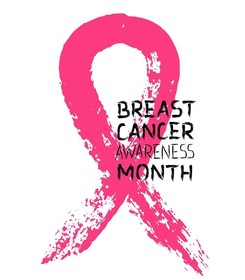 |
|
Learn more
|
According to the CDC, more than 1 out of 3 unexpected infant deaths in the U.S. each year are from SIDS (Sudden Infant Death Syndrome). Research shows that soft or loose blankets in baby’s sleep area can be a leading cause of infant death.
The National Institute of Child Health and Human Development started Safe to Sleep in 1994 to teach about reducing the risk of SIDS. The campaign aims to:
- Share safe infant sleep information.
- Spread awareness of safe sleep practices.
You and others can take actions to help your baby sleep safely and to reduce your baby's risk of SIDS and other sleep-related causes of infant death. Simple actions can make a big difference.
|
Learning about SIDS and safe sleep for babies is important for all caregivers, not just for parents. Grandparents, aunts, uncles, babysitters, childcare providers and anyone else who might care for babies should learn more.
You can find videos, brochures and other materials in multiple languages at safetosleep.nichd.nih.gov/resources/caregivers.
|
|
 |
November is American Diabetes Month and Diabetic Eye Disease Month. The American Diabetes Association aims to create awareness and education about diabetes, break down stereotypes and correct misunderstandings surrounding the disease. For anyone diagnosed with diabetes, it impacts nearly every daily decision—from what they'll eat, wear and do, to how they'll take care of themselves.
Type 1 diabetes
Type 1 diabetes occurs at every age and in people of every race, shape and size. In type 1 diabetes, the body does not produce insulin. With the help of insulin therapy and other treatments, everyone can learn to manage their condition and live long, healthy lives.
Type 2 diabetes
Type 2 diabetes is the most common form of diabetes. It is where your body doesn’t use insulin properly. The two keys to managing type 2 diabetes are a healthy diet and exercise. Medication or insulin treatment can also help you manage it.
Diabetic eye disease
Diabetes is the leading cause of vision loss in people ages 18-64. There are no obvious signs or symptoms. However, an annual routine eye exam could prevent 95% of vision loss caused by diabetes.
- Know your risk. Get an annual comprehensive eye exam for early detection of diabetes-related eye problems.
- Know the warning signs. Signs or symptoms may not be noticed until they become too obvious to ignore.
- Blurred vision
- Dark spots or “holes”
- Flashes of light
- Seeing an increased amount of floaters
- Poor night vision
What you can do
- Get tested. Members 18 years or older can earn a $25 gift card reward for completing a diabetic eye exam and a $25 gift card reward for completing an A1C test.
- Take a diabetes risk test at www.diabetes.org/diabetes-risk.
Learn the facts at www.diabetes.org or www.healthwise.net/hennepin.

Lung cancer accounts for about 27% of all cancer deaths. Lung cancer also has the lowest 5-year survival rate of the other most common cancers.
People breathe in and out about 12-15 times per minute at rest. Your lungs move fresh air in and waste gasses out of the body. Healthy lungs are important to a healthy body.
Signs of lung disease
Knowing the warning signs of lung disease can help you receive treatment before the disease becomes serious or life threatening.
- Nagging cough
- Shortness of breath
- Chronic mucus production that lasts a month or longer
- Wheezing
- Coughing up blood
- Chronic chest pain
What to do
If you experience warning signs, see your doctor as soon as possible. Ask for a lung cancer screening. Early detection could save your life.
Learn more:
American Cancer Society’s Great American Smokeout
Smoking can lead to lung cancer. Smoking causes about 480,000 deaths every year. More than 16 million Americans live with a smoking-related disease. Quitting smoking can reduce your cancer risk.
Quitting smoking is not easy. But with time and a plan, you can do it. The American Cancer Society’s Great American Smokeout on November 17 can be a place to start your journey toward a smoke-free life.
To find out more, visit www.cancer.org/healthy/stay-away-from-tobacco/great-american-smokeout.html.
|
|
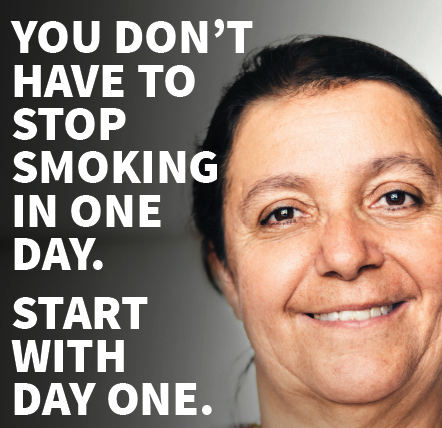 |
|
Chronic Obstructive Pulmonary Disease (COPD) is a progressive disease that makes it hard to breathe. COPD can cause a mucus-producing cough, wheezing, shortness of breath, chest tightness and other symptoms. Some people who have asthma can develop COPD. COPD is more common in people ages 40 and older.
COPD can often be prevented. Cigarette smoking is the leading cause of COPD.
|
|
 |
However, up to 25% of people with COPD never smoked. Long-term exposure to other lung irritants like air pollution, chemical fumes or dust may contribute to COPD. A rare genetic condition called AAT deficiency can also cause the disease.
What you can do
- Prevent COPD before it starts
- Don’t start smoking.
- Quit smoking. Quit Partner can help: quitpartnermn.com, 888-354-7526 or TTY 711.
- Avoid lung irritants like air pollution, chemical fumes, dusts and secondhand smoke.
- Prevent complications and slow the progression
- Talk with your doctor to see if you have COPD and to get treatment.
- Stop smoking.
Learn more about COPD and National COPD Awareness Month.
Eligible Hennepin Health members can get a ride to and from health care appointments.
- For medical and dental appointments
- For physical therapy appointments
- For mental health and chemical dependency appointments
- For occupational therapy, acupuncture or chiropractic appointments
- To pick up your prescription at a pharmacy
Call us at 612-596-1036 (TTY 711 or 800-627-3529), Monday-Friday from 8 a.m. – 4:30 p.m. Call three days before you need transportation for best service.
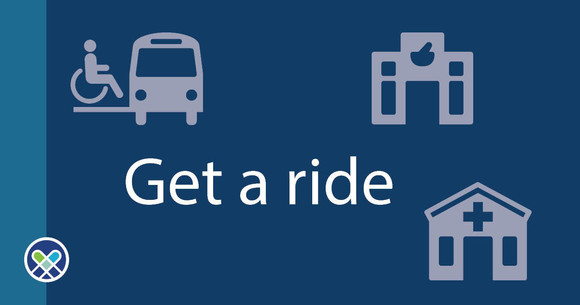
DHS approved 10/19/2022 ID# MC-1362-MC
Language and civil rights notices
|